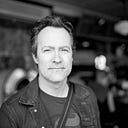Member-only story
The Power of the “Two Shot” In Nonfiction Writing
Talking to someone is interesting. Watching them do something, even more so
I’ve been a long-form magazine writer for over 25 years. Most everything I know about reporting and writing big magazine features came from immersing myself in the field — studying countless pieces by top magazine writers, getting advice from peers, and getting crucial feedback from some truly gifted editors.
But one of my favorite tricks doesn’t come from the world of print media at all.
It comes from film, and documentaries. It’s called …
… the “two shot”.
And when you understand its curious aesthetic and reportorial power, it can really change the force and character of your nonfiction writing. Indeed, it turns out that studying how shots work in documentary film-making can be really illuminating when you’re writing nonfiction.
In a documentary film, you see a couple of common shots. Often the documentary filmmaker will sit someone in front of a camera and interview them, with the subject talking right to the camera.
That sort of shot has many powerful uses. It’s excellent for exposition, as when the interviewee tells a story about their life, or shares their expertise. In a one-person shot, you can quickly convey a ton of information while also capturing a slice of the interviewee’s personality. Aesthetically, it’s intimate yet punchy — the person, talking right to the audience.
But there’s another shot you frequently see, though: The “two shot”.
In a two-shot, the camera shows two people at once. This type of shot has a whole separate energy — aesthetically and reportorially — because when an interviewee is interacting with someone else, you see different parts of their person. When you’re a reporter talking to an interview subject, it’s necessarily a somewhat stilted and artificial interaction; when someone is talking to a friend or workmate or peer, in contrast, they get to be themselves.
What’s more, there’s a particular style of two-shot in documentary film that I really love. It’s when the folks on camera are just hanging out together and not interacting with the camera — or the…
